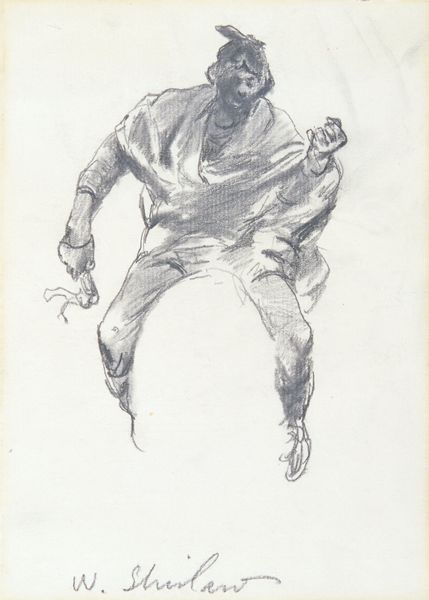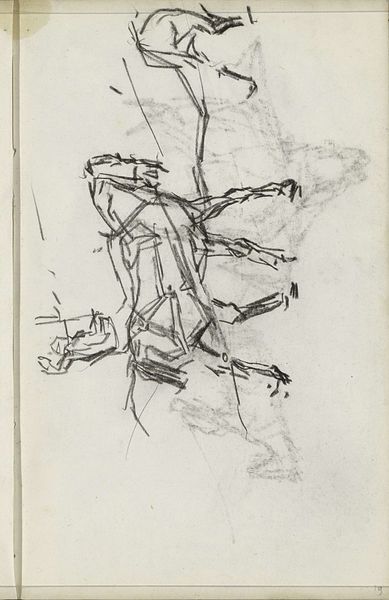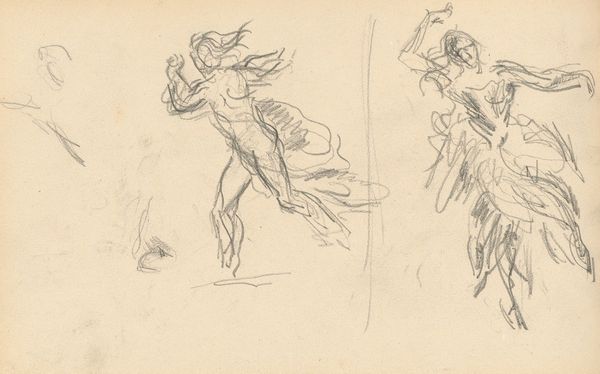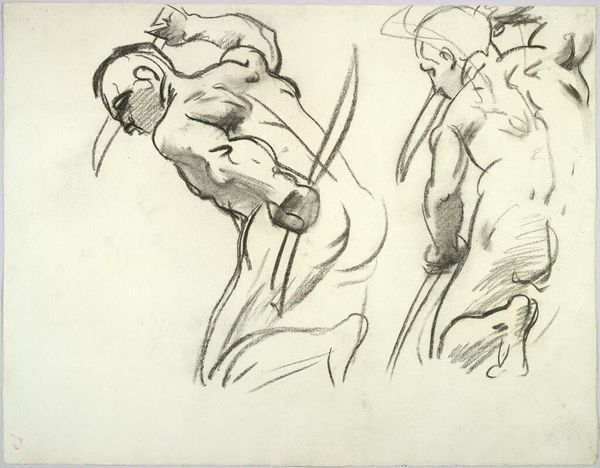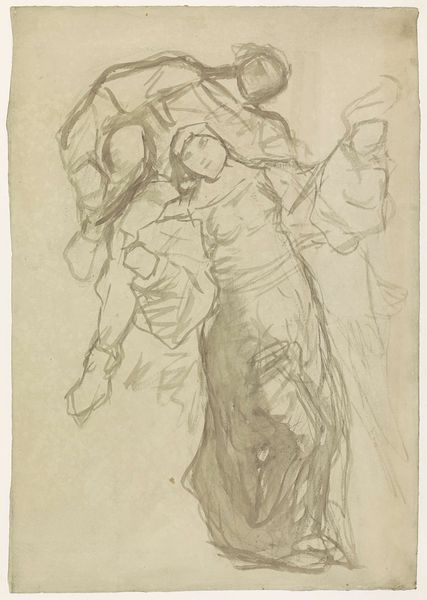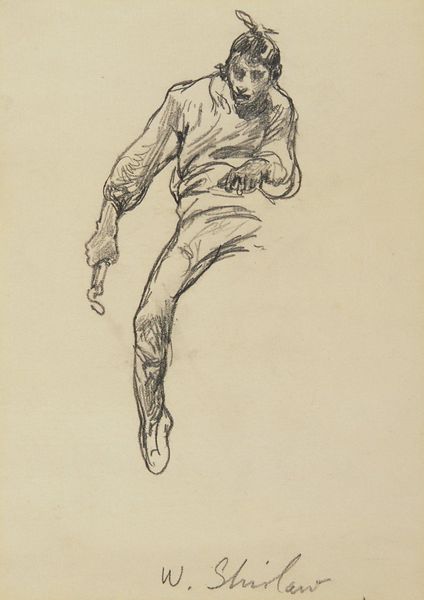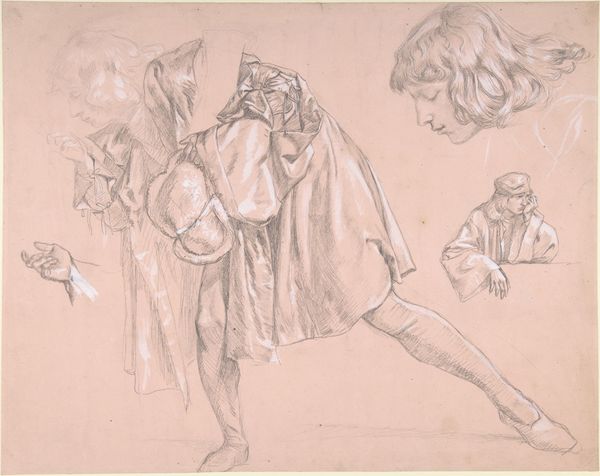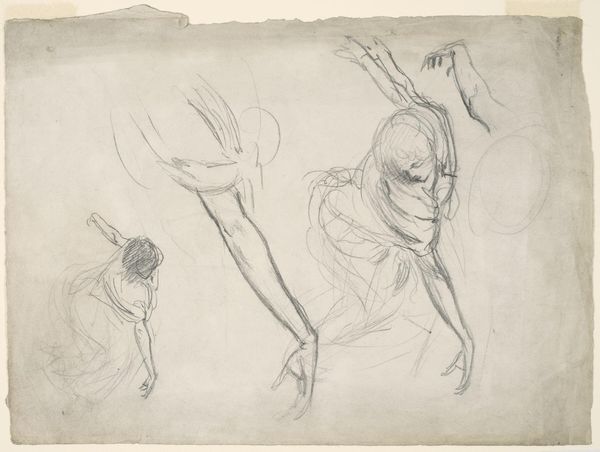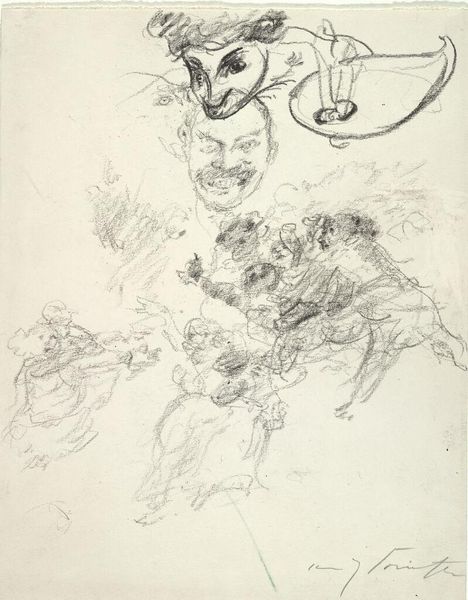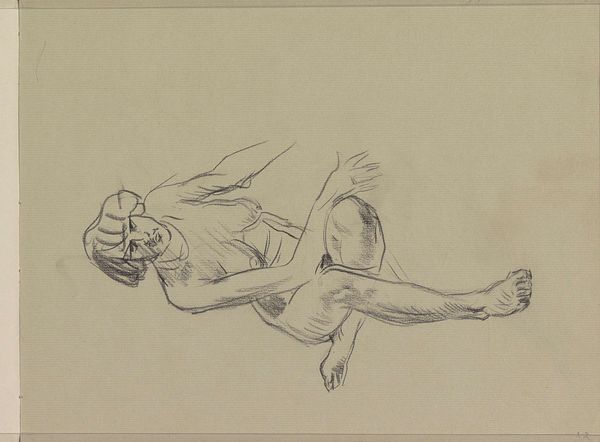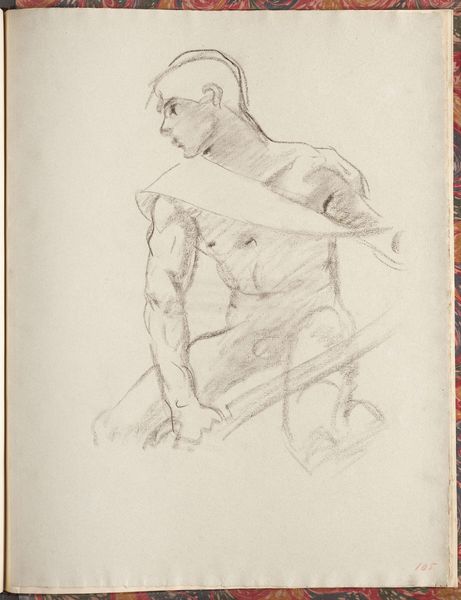
drawing, paper, dry-media, pencil, graphite
#
drawing
#
figuration
#
paper
#
dry-media
#
pencil
#
graphite
Dimensions: 7 5/8 x 4 3/8 in. (19.37 x 11.11 cm)
Copyright: Public Domain
Curator: Before us is Walter Shirlaw's "Study of Indian Riding," created around 1890. It's currently held here at the Minneapolis Institute of Art. Editor: It's so immediate, isn’t it? The raw quality of the graphite on paper—you feel as though you're right there in the artist's studio, watching him capture this fleeting moment. Curator: The portrayal of Indigenous Americans at this time is crucial to dissecting power dynamics and representation. How do you interpret Shirlaw's perspective here? Does it romanticize or objectify? Editor: The hatching and cross-hatching create volume, yes, but there's also something unfinished about the sketches, particularly in the upper figure. The lines are confident but almost exploratory, trying to define the form in increments. Curator: It brings forth questions of appropriation and authenticity. Shirlaw, as a non-Indigenous artist, is engaging with and documenting Indigenous culture, inevitably through his own lens. What implications does this carry for historical narratives and who controls them? Editor: But notice how the lack of detail directs our focus. Shirlaw wants us to consider posture and implied movement foremost. It almost anticipates cinematic movement. The riding stance is palpable even though we only see the figure from the waist up. Curator: It's impossible to separate art from its socio-political roots. We must discuss this work with the understanding that portrayals of Indigenous people have often been used to reinforce harmful stereotypes or justify colonial violence. This "Study" then, cannot be viewed merely as a formal exercise. Editor: Ultimately, the composition draws the eye toward the lower figure, anchoring the entire work. This gives us an idea about weight, balance and forward thrust. Curator: Absolutely. It allows for critical engagement and dialogue regarding its place within a larger context of colonial representation. Editor: It’s fascinating how the artist distills so much motion and vitality with such simple means.
Comments
No comments
Be the first to comment and join the conversation on the ultimate creative platform.
